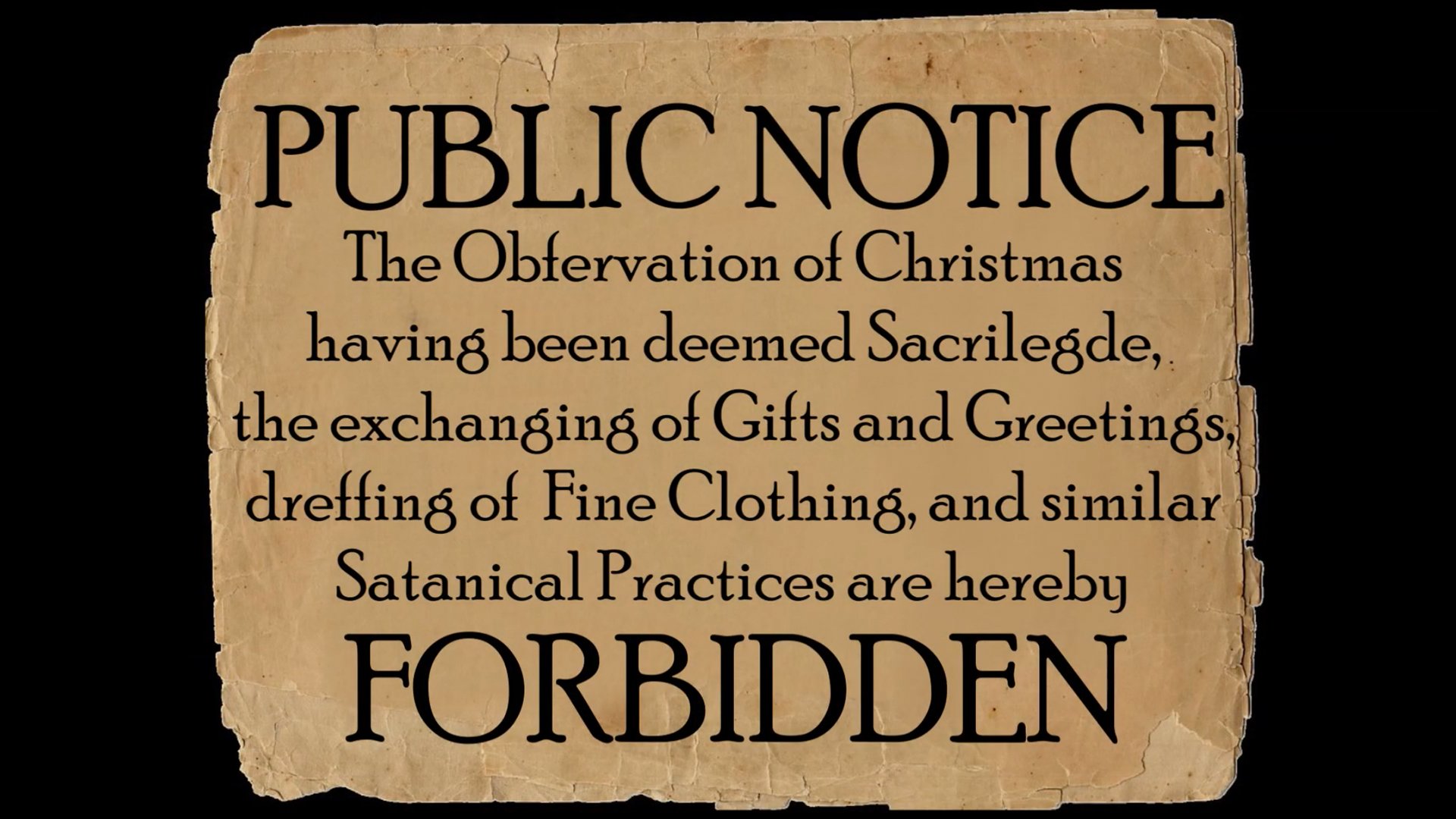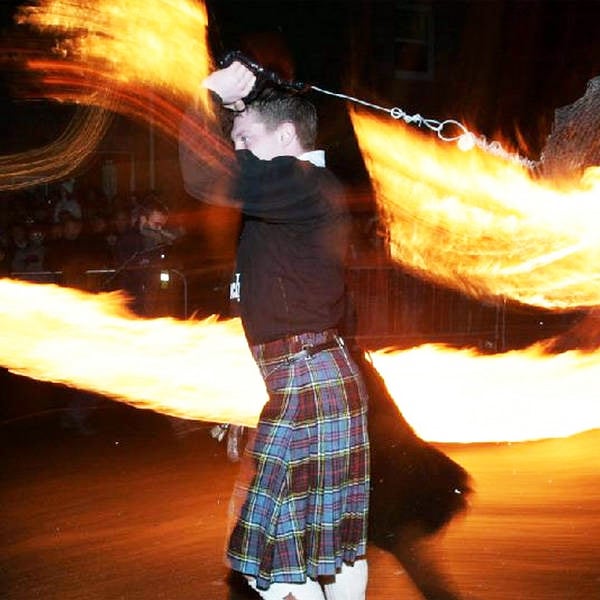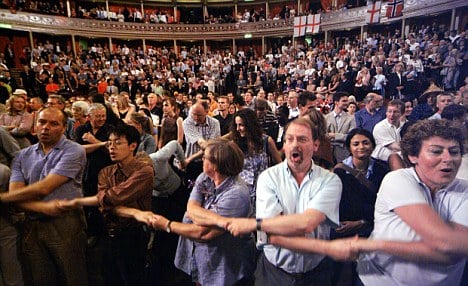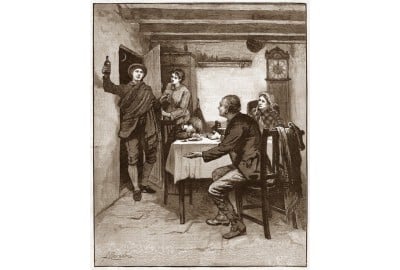Nobody Does New Year's Eve Better Than The Scots!
Hogmanay is the Scots word for the last day of the year and also the name of their New Year’s celebration. And it is one heck of a party. For example, back in 1996-97 the Edinburgh Hogmanay celebrations made the Guinness Book of Records as the world’s largest New Year’s party with about 400,000 people attending!
The Edinburgh street party is famous but there’s actually a lot that goes into this holiday so we’re going to run down some of the best Hogmanay traditions. But first a little background.

What Are The Roots of Hogmanay?

In a sense Hogmanay’s been celebrated in one form or another since ancient times. It inherits traditions from both Celtic fire festivals and the nordic winter solstice festival known as Yule. Yule was brought to the British Isles by the Vikings and Anglo-Saxons. It was a twelve-night-long winter holiday. That’s where our term “Yule Tide” or the “Twelve Days of Christmas” comes from. In Scotland they call it the “Daft Days”.
And like that name implies, this was basically a huge round of partying and feasting. When the Christian church took root, the party still went on. They just made a few changes like celebrating Christ’s birth and the arrival of the three wise men. Sadly for Scotland, the party got squelched in the 17th century after a bunch of nasty fighting known as The Wars of the Three Kingdoms (that included the English Civil War by the way).
Anyway, the Presbyterian Church of Scotland rose to power and they had no use for Christmas. Or, really, anything fun like drinking, eating too much or getting rowdy. So Christmas celebrations were outlawed. In fact, you could even be arrested if you were caught baking Chrtistmas pies. No seriously. Thanks, John Knox!
“Christmas” was banned and not an officially recognized holiday of any sort until 1958. But Hogmanay….ah. That was the work-around.
Here are a few of the very best Hogmanay traditions
Redding the House

If you’re going to have a proper Hogmanay, you really need to tidy up for company first — and you can expect a LOT of company. “Redding the house” is similar to annual spring cleaning, or the ritual cleaning of the kitchen for Passover. Traditionally during the Yuletide no work was to be done at all, so you needed to be ready to drop all your housework before the celebrations began. Sweeping out the fireplace was especially important and there was a secret skill in reading the ashes to tell the future. Kinda like reading tea leaves. To this day, Scottish families do a major cleanup to ready the house for the New Year.
Setting things on FIRE!

All around the world people feel drawn to the warmth and light of fire during the darkest time of the year. It reminds us that the sun will return. It drives off the blues not to mention the odd evil spirit. Hogmanay celebrations are rooted in ancient Celtic fire rituals more commonly associated with spring and autumn.
A lot of creativity goes into Hogmanay fire fun. And each region of Scotland has it’s own twist on it.
In Edinburgh, the opening event of Hogmanay is a spectacular torchlight procession down the Royal Mile to Holyrood Park. This amazing experience attracts upwards of 20,000 participants and another 20,000 spectators. And then there’s the midnight fireworks show. Think watching a ball of strobe lights drop in Times Square is cool?
You ain’t seen nuthin yet.
AULD LANG SYNE

Perhaps the most famous and heart-warming Hogmanay tradition is the singing of “Auld Lang Syne.” This timeless song was originally a poem written by Robert Burns, based on a few lines of a traditional tune he heard sung by an old villager. As the clock strikes midnight on New Year’s Eve, the singing begins. Singers form a circle, cross their arms and hold hands. In Scotland, this is done only during the final verse, but in other countries people tend to link up for the whole song. Auld Lang Syne is now the most readily recognized song in the world. More than just a quaint ditty, Auld Lang Syne reminds us that as time passes, only true friendship and empathy for our fellow man endures, making life worth living whatever may come.
FIRST-FOOTING

Immediately after midnight, the practice of “First-Footing” can begin. Another ancient custom, First-footing involves being the first person to cross the threshold of a friend or neighbor. It’s important because the First-foot sets the luck of the household for the coming year.
Traditionally, tall, dark-haired men are preferred as first-footers. One old version has the dark-haired man leave the house by the back door just before midnight on New Years Eve. He then walks around the house, and at the stroke of midnight knocks on the front door. By doing this He represents the old luck leaving and the new luck coming in.
Symbolic gifts such as salt, coal, shortbread, whisky, and black bun fruit cake are presented to the hosts. Each gift represents a different kind of good luck. In return, the householder offers gifts of food and drink to the first-footer and his friends.

Nowadays, first-footing celebrations can go on well into the dawn hours. And since the Hogmanay holiday officially lasts three days, the parties and visiting just roll on and on. It’s a great time to reconnect with the people who matter.
Finally, we come to the final major custom of Hogmanay. SAINING.

The word means “protecting” or “blessing” in the Scots dialect. It’s an ancient custom of the Highlands. Early on New Year’s Day, householders drink a cup of magic water. What’s magic about it? Well, it’s been drawn from a “dead and living ford”. That is, a river ford that is routinely crossed by both the living and the dead. Usually this means a stream crossing on the way to a church.
After you drink some of the water, the rest is sprinkled around each room of the house, on the beds, and on even on all the people who live there.
After the sprinkling, the house is sealed up tight and juniper branches are set on fire. The lady of the house carries them throughout the house letting the smoke fumigate the building. You know you’ve done a good job when everyone is sneezing and coughing!
Then... all the doors and windows are flung open wide to let in the cold, fresh air of the new year.
The lady of the house then offers a “restorative” from the whisky bottle, and everyone sits down to New Year’s breakfast, which can be a whole feast in and of itself. The tradtional Christmas season treat, Dundee Cake, is certainly a delightful option. (at least at my house - I love it with coffee)

Should You Try Out These Scottish New Year's Customs? YES!
Clearly, Hogmanay is a complex and rich holiday. It captures in one celebration so much of what it is to be Scottish. We hope you’ll consider embracing some of these traditions this year. Don the kilt, pour a dram, and relish the pure joy of the Celtic soul in the dark of winter.


